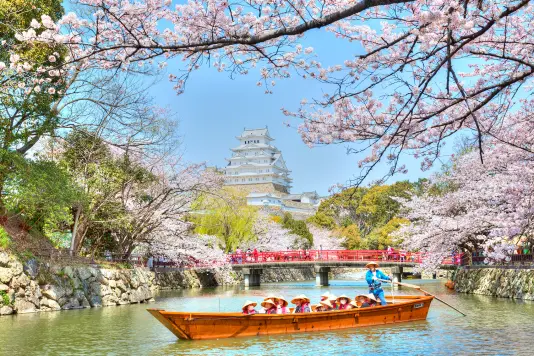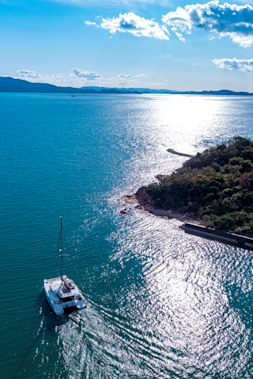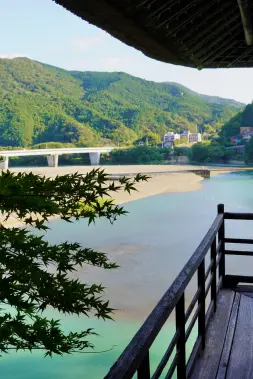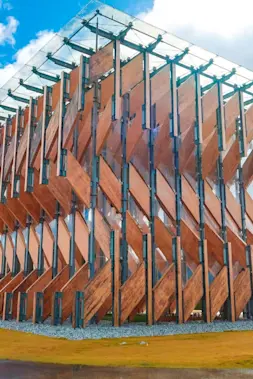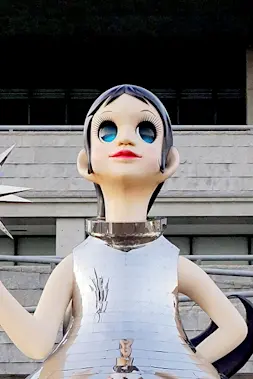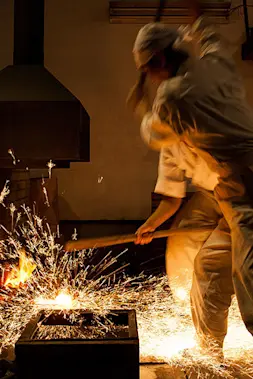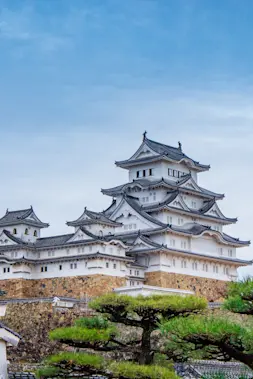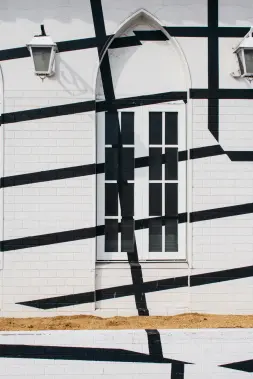Art & Culture
Himeji Castle: An Architectural Masterpiece and Symbol of Japan

-
- DESTINATION NAME
- Hyogo
-
- RELATED TAGS
-
- LAST UPDATED
- 30 March, 2021
Himeji Castle (姫路城) is one of the traditional symbols of Japan in the collective imagination, along with Mount Fuji or the streets of Gion, the famous Geisha district in Kyoto. Japanese castles conjure up images of feudal times in the country; samurai and epic battles, as well as ghosts and creatures from Japanese folklore (known as yokai in Japanese), fill the imagination. Our minds drift to magnificent photographs of castles surrounded by blooming cherry blossom trees from glossy travel magazines or on social media. It is not surprising that Himeji Castle, often regarded as the most beautiful Japanese castle, is widely known these days and featured in Japanese and international popular culture.
The White Heron Castle: A Marvel of Japanese Architecture
The vast majority of Japan’s castles were destroyed following the establishment of the Meiji era in 1868, and those that we can see today are mainly reconstructed from concrete. But there are still twelve Japanese castles that have preserved their original keep, five of which are located in the Setouchi region. They are Bichu Matsuyama Castle in Okayama Prefecture, Marugame Castle in Kagawa Prefecture, Matsuyama Castle and Uwajima Castle in Ehime Prefecture and, the most famous, Himeji Castle in Hyogo Prefecture. Himeji was the first Japanese castle to be featured on UNESCO’s list of important cultural heritage sites in 1993.
Himeji Castle was built at the start of the 17th century, at a time when construction techniques for Japanese castles were at their peak. The immaculate white plastered walls and elegant curves of its keep, sitting upon layers of stone, dominate Himeji town and stand at the height of 46.5 metres, roughly equivalent to a 17-storey building! As impressive as the keep is, there’s even more to the castle complex, with 82 buildings included within the 107 hectares area of Himeji. It’s a true example of Japan’s defensive armour from its period as it is an impenetrable fortress with a refinement of its own. Some castle elements have been constructed for practical reasons, such as curved walls to make scaling up virtually impossible or the labyrinth-style layout to slow down potential invaders. Still, other features certainly add to the aesthetic appeal of the complex.
Another feature that struck me during my visit to the castle was the vast number of cherry trees planted around the grounds. When I told my Japanese friends about my trip, they informed me that sakura (cherry blossom) trees are often planted around Japanese castles not only to make the area look attractive but also to compact the roots into the soil. In my opinion, the large crowds who come to admire the blossoms would certainly compress the foundations on their own, but that’s another theory entirely! Even though the cherry trees were not in bloom, I could genuinely imagine how beautiful the grounds would be during the Hanami season when visitors come to celebrate the blooming of the cherry blossom.
It isn’t easy to imagine samurai roaming around the castle in its picture-perfect state, but it has only been this way since the restoration in the Meiji period. The cherry trees represent a change in the castle’s purpose, as it moves away from its original purpose as a fortress and centre of power and into a public space for tourists and locals to enjoy. Learn more about Himeji Castle’s architecture and history in our article here.
The Most Beautiful Views of Himeji Castle
The castle dominates Himeji town, which you can admire from afar, so be sure to sit next to the window on the train if you are passing through. It is interesting to note that strict town planning regulations have been put in place to protect the castle itself and its views from the surrounding areas.
Therefore, I searched for vantage points to admire Himeji castle from beyond its boundaries, and here are a few that I found.
Exiting the station, you will find yourself in front of Otemae Street, a large one kilometre-long avenue that connects the station to the castle in a straight line. You can truly see how Japan “exists between tradition and modernity” here as the modern train station faces the traditional castle. The terrace offers an excellent view of the castle and can be accessed via stairs and an elevator in front of the station’s north exit.
This view is undoubtedly the most original, and I was captivated by how inventive it was. The famous architect Kenzo Tange designed the Hyogo Prefecture Museum of History in such a way that the castle reflects on the front of the building. It is an ingenious symbol for a museum that houses so many collections relating to Himeji Castle.
The Hyogo Prefecture Museum of History is located in Shirotopia Commemorative Park, where visitors can walk around to appreciate the castle’s scale. A stroll through the park offers various vantage points of the castle’s keep, but it is also the ideal place to take a rest.
Even though I did not have the time to explore the surrounding area and discover other vantage points, there are undoubtedly many more. A brochure from the tourist information office mentions in particular: the observatory on the fifth floor of the Egret Himeji building ( イーグレひめじ, a local government building); a view of one of the most beautiful angles of the keep from atop Mount Otoko (男山); and from Himeji Museum of Literature, you can see the castle in the distance behind the building designed by internationally renowned architect Tadao Ando. This is not an exhaustive list, and one of the pleasures of exploring Himeji is to find your own preferred view of the castle.
Himeji Castle in Art and Popular Culture
Himeji Castle is truly a symbol of Japan, and it will come as no surprise that it shows up in different types of international popular culture, from James Bond movies to Nanoblock models and video games such as Civilization.
The history of Himeji Castle in popular culture started early, not long after its construction, and various legends have emerged over the years. The first one is the story of Okiku, a servant who was thrown in a well for breaking a cherished plate and whose ghost is said to haunt the castle still. Perhaps the most famous legend is Osakabe Hime (刑部姫), a formidable yokai (Japanese spirit or supernatural being) from mysterious origins who lives in the castle’s keep and is said to be responsible for the death of the former lord of Himeji, Terumasa Ikeda. Some say the figure takes the form of a fox, or even a kami (a Shinto spirit), displaced during the castle’s construction and then re-enshrined into a shrine, which we can see today on the second floor of the keep. Osakabe Hime has inspired a piece of Kabuki theatre and appears in the video game Fate/Grand Order (F/GO).
Beyond the legends, it’s the castle’s architecture that has earned its popularity, and construction games such as Minecraft allow players to make their own versions, captivating the player’s imagination.
Le château de Himeji a également servi de décor à plusieurs films japonais et internationaux. Le grand Akira Kurosawa a tourné là une partie des films Ran (1985) et Kagemusha, l'ombre du guerrier (1980). C’est aussi le décor choisi (pour représenter le château d’Osaka) dans la mini-série télévisée Shogun, adaptée du roman de James Clavell en 1980, et dans un film qui n’utilise pas le château comme décor d’époque pour une histoire de samouraïs mais comme un supposé centre secret d’entraînement de ninja (sic) : On ne vit que deux fois, un James Bond de 1967 avec Sean Connery dans le rôle principal, et l’écrivain Roald Dahl au scénario.
How To Get To Himeji Castle?
Himeji Castle is around a 15-minute walk from JR Himeji train station (姫路駅). The station is served by the Shinkansen high-speed bullet train, which connects Tokyo, Fukuoka, Kyoto, Osaka and Hiroshima to Himeji Station.
There is a direct train between Kyoto and Himeji on the JR Tokaido-Sanyo line. Allow between 45 minutes and 1 hour on the high-speed Shinkansen service or 1 hour 30 minutes on the rapid service.
There is a direct service between Osaka and Himeji on the JR Tokaido-Sanyo line. Allow between 45 minutes and 1 hour on the high-speed Shinkansen service or 1 hour 30 minutes on the rapid service. There is also a direct service on the Hanshin line from Umeda Station, which takes around 1 hour 45 minutes. This option is the cheapest for those who do not have the JR Pass.
There is a direct service between Kobe and Himeji on the JR Tokaido-Sanyo line. It takes 37 minutes on the “Special Rapid Service” (新快速) train or Shinkansen.
There is a direct service between Tokyo and Himeji on the JR Tokaido-Sanyo line, and you should allow about 3 hours by high-speed Shinkansen for the journey.
Even if I had only seen the photographs of Himeji Castle, I would not be able to fully imagine the scale of the structure without seeing it for myself. It’s such a beautiful monument that must be seen to be believed. You can easily understand why the castle has inspired so many creators and why it is such an iconic image of Japan. Its symbolic status is certainly not overdone, and the only way to fully appreciate it is to see it for yourself.
Text and photographs: Clémentine Cintré
Translation from French: Mark Webster
RELATED DESTINATION
Hyogo
Hyogo Prefecture is roughly in the center of the Japanese archipelago. It has the Port of Kobe, which plays an important role as the gateway of Japan. It also is home to plentiful tourist attractions such as Himeji Castle, a UNESCO World Heritage site, and several hot spring areas. Kobe beef, one of the three major brands of wagyu beef, is a delicacy.
